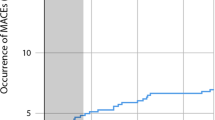Abstract
Background
Phlegm and blood stasis syndrome (PBSS) is one of the main syndromes in coronary heart disease (CHD). Syndromes of Chinese medicine (CM) are lack of quantitative and easy-implementation diagnosis standards. To quantify and standardize the diagnosis of PBSS, scales are usually applied.
Objective
To evaluate the diagnostic accuracy of CM diagnosis scale of PBSS in CHD.
Methods
Six hundred patients with stable angina pectoris of CHD, 300 in case group and 300 in control group, will be recruited from 5 hospitals across China. Diagnosis from 2 experts will be considered as the “gold standard”. The study design consists of 2 phases: pilot test is used to evaluate the reliability and validity, and diagnostic test is used to assess the diagnostic accuracy of the scale, including sensitivity, specificity, likelihood ratio and area under the receiver operator characteristic (ROC) curve.
Discussion
This study will evaluate the diagnostic accuracy of CM diagnosis scale of PBSS in CHD. The consensus of 2 experts may not be ideal as a “gold standard”, and itself still requires further study. (No. ChiCTR-OOC-15006599).
Similar content being viewed by others
References
Leigh JA, Alvarez M, Rodriguez CJ. Ethnic minorities and coronary heart disease: an update and future directions. Curr Atheroscler Rep 2016;18:9.
Kanu JS, Gu Y, Zhi S, Yu M, Lu Y, Cong Y, et al. Single nucleotide polymorphism rs3774261 in the AdipoQ gene is associated with the risk of coronary heart disease (CHD) in Northeast Han Chinese population: a case-control study. Lipids Health Dis 2016;15:6.
Liu B, Du Y, Cong L, Jia X, Yang G. Danshen (Salvia miltiorrhiza) compounds improve the biochemical indices of the patients with coronary heart disease. Evid-Based Complement Alternat Med 2016;2016:9781715.
Zhang NL, Yuan S, Chen T, Wang Y. Latent tree models and diagnosis in traditional Chinese medicine. Artif Intel Med 2008;42:229–245.
Chen J, Lu P, Zuo X, Shi Q, Zhao H, Luo L, et al. Clinical data mining of phenotypic network in angina pectoris of coronary heart disease. Evid-Based Complement Alternat Med 2012;2012:546230.
Ren Y, Zhang M, Chen K, You S, Li J, Guo L, et al. Clinical and epidemiological investigation of TCM syndromes of patients with coronary heart disease in China. Evid-Based Complement Alternat Med 2012; 2012:714517.
Shi Q, Zhao H, Chen J, Ma X, Yang Y, Zheng C, et al. Study on TCM syndrome identification modes of coronary heart disease based on data mining. Evid-Based Complement Alternat Med 2012;2012:697028.
Zhi L, Zhang D, Yan JQ, Li QL, Tang QL. Classification of hyperspectral medical tongue images for tongue diagnosis. Comput Med Imag Graph (Chin) 2007;31:672–678.
Chung YF, Hu CS, Yeh CC, Luo CH. How to standardize the pulse-taking method of traditional Chinese medicine pulse diagnosis. Comput Biol Med (Chin) 2013;43:342–349.
Okitsu R, Iwasaki K, Monma Y, Takayama S, Kaneko S, Shen G, et al. Development of a questionnaire for the diagnosis of Qi stagnation. Complement Ther Med 2012;20:207–217.
Magin P, Juratowitch L, Dunbabin J, McElduff P, Goode S, Tapley A, et al. Attitudes to Alzheimer’s disease testing of Australian general practice patients: a cross-sectional questionnaire-based study. Int J Geriatr Psychiatry 2016;31:361–366.
Cheng HF. Management of perimenstrual symptoms among young Taiwanese nursing students. J Clin Nurs 2011;20:1060–1067.
Hung JY, Chiou CJ, Chang HY. Relationships between medical beliefs of superiority of Chinese or Western medicine, medical behaviours and glycaemic control in diabetic outpatients in Taiwan. Health Soc Care Commun 2012;20:80–86.
Line BR, Peters TL, Keenan J. Diagnostic test comparisons in patients with deep venous thrombosis. J Nucl Med 1997;38:89–92.
Li XT. Understanding of clinical syndrome differentiation of phlegm and blood stasis syndrome (chest pain). Liaoning J Tradit Chin Med (Chin) 2016;43:10–12.
Bossuyt PM, Reitsma JB, Bruns DE, Gatsonis CA, Glasziou PP, Irwig LM, et al. Towards complete and accurate reporting of studies of diagnostic accuracy: the STARD initiative. Fam Pract 2004;21:4–10.
Levine GN, Bates ER, Bittl JA, Brindis RG, Fihn SD, Fleisher LA, et al. 2016 ACC/AHA guideline focused update on duration of dual anti-platelet therapy in patients with coronary artery disease: a report of the American College of Cardiology/American Heart Association Task Force on Clinical Practice Guidelines. J Thorac Cardiovasc Surg 2016;152:1243–1275.
Chinese Society of Cardiology, Chinese Medical Association; Editorial Board, Chinese Journal of Cardiology. Guideline for diagnosis and treatment of patients with chronic stable angina. Chin J Cardiol (Chin) 2007;35:195-206.
Hu JQ, Wang CC, Duan F, Li XT, Liu R, Xu WM, et al. Study on macrocosmic diagnostic criteria for coronary heart disease with intermingled phlegm-blood stasis syndrome. Chin J Integr Trad West Med (Chin) 2016;36:1164–1168.
Gumina S, Carbone S, Albino P, Gurzi M, Postacchini F. Arm squeeze test: a new clinical test to distinguish neck from shoulder pain. Eur Spine J 2013; 22:1558–1563.
Hawkes M, Conroy AL, Opoka RO, Namasopo S, Liles WC, John CC, et al. Use of a three-band HRP2/pLDH combination rapid diagnostic test increases diagnostic specificity for falciparum malaria in Ugandan children. Malar J 2014;13:43.
Zheng XY, ed. Guiding principle of clinical research on new drugs of Chinese Medicine. Beijing: China Medical Science Press; 2002:67–73.
Shao L, Guo Y, Jiang Y, Liu Y, Wang M, You C, et al. Sensitivity of the standard chlamydia trachomatis culture method is improved after one additional In vitro passage. J Clin Lab Anal 2016;30:697–701.
Wang Z, Zhou XH, Wang M. Evaluation of diagnostic accuracy in detecting ordered symptom statuses without a gold standard. Biostatistics 2011;12:567–581.
Author information
Authors and Affiliations
Corresponding author
Additional information
Supported by National Basic Research Program of China (973 Program, No. 2014CB542901)
Rights and permissions
About this article
Cite this article
Liu, Xq., Peng, Dh., Wang, Yp. et al. Diagnostic Accuracy of Chinese Medicine Diagnosis Scale of Phlegm and Blood Stasis Syndrome in Coronary Heart Disease: A Study Protocol. Chin. J. Integr. Med. 25, 515–520 (2019). https://doi.org/10.1007/s11655-018-2793-9
Received:
Accepted:
Published:
Issue Date:
DOI: https://doi.org/10.1007/s11655-018-2793-9




